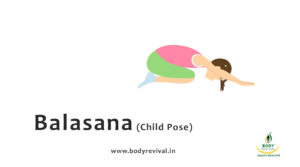For the past decade, there have been many researches done on how yoga exercises can help in arthritis. Arthritis is a condition characterised by inflammation and stiffness in the joints. It impacts one’s quality of life.
While medical treatments play an important role in managing arthritis, incorporating gentle and effective yoga exercises can greatly influence in reducing the symptoms. Yoga exercises help in alleviating the pain and strengthen the joints.
The ancient practice of yoga offers a holistic approach for arthritis. It targets joint flexibility, muscle strength, and pain reduction.
In this blog, we will explore five yoga exercises tailored to help manage arthritis, strengthen joints, and alleviate pain, allowing you to regain control and embrace a more active lifestyle.
Benefits of Yoga Exercises
Scientific research has shown that practising yoga exercises can offer several benefits for individuals with arthritis. Here are some of the proven benefits of incorporating yoga:
1. Improved Joint Flexibility and Range of Motion: Regular yoga exercise can help improve joint flexibility and increase the range of motion. It can alleviate stiffness and reduce discomfort.
2. Pain Relief: Yoga’s gentle stretches and movements can help ease joint pain by promoting circulation, reducing inflammation, and releasing tension in muscles surrounding the affected joints.
3. Strength and Muscle Support: Many yoga exercises require holding positions that engage various muscle groups. This can help build strength in muscles surrounding arthritic joints.
4. Enhanced Balance and Coordination: Yoga incorporates balance-focused postures and movements, which can improve balance and coordination.
5. Joint Lubrication: The gentle and fluid movements in yoga can help stimulate the production of synovial fluid, which lubricates joints and reduces friction, contributing to improved joint function.
1. Child’s Pose (Balasana)
Balasana is a yoga asana that is known for its calming and relaxing effects. The asana stretches the lower back, hips, and thighs while calming the mind.
It helps relieve back and neck pain, while gently stretching the muscles.

Instructions:
Begin with kneeling on the floor, big toes touching, and knees spread apart. Lower your torso and extend your arms in front or alongside your body. This pose encourages relaxation while promoting joint mobility, making it an ideal starting point for your arthritis-friendly yoga routine.
Caution: People who have chronic or recent lower back, knee, shoulder, or ankle injuries should not perform this asana as it may aggravate them.
2. Cat-Cow Stretch (Marjaryasana-Bitilasana)
The cat-cow stretch is a combination of Marjarya asana and Bithil asana. The asana is a gentle and relaxing exercise that helps in improving posture and balance. It also helps you regulate your breathing as you do the movements, according to your breathing pattern.
Instructions:
This gentle flowing sequence alternates between arching and rounding your spine. Start on your hands and knees, aligning your wrists beneath your shoulders and your knees under your hips. Inhale as you arch your back, lifting your tailbone and head (cow pose), then exhale while rounding your spine and tucking your chin (cat pose). This movement promotes spinal flexibility and enhances joint lubrication.
Caution: People who have chronic or recent abdomen, spinal, and wrist injuries should avoid doing this asana.
3. Downward-Facing Dog (Adho Mukha Svanasana)
Adho mukha svanasana is a part of the surya namaskar (sun salutation) in yoga. Down Dog strengthens the wrists, arms, and shoulders while stretching the hamstrings, and back. It counteracts the consequences of extended sitting and improves posture.
Instructions:
Begin in a plank position, then lift your hips, pushing them back and up, creating an inverted V shape. Open your fingers and stretch them out while pushing your heels down towards the ground. Downward-Facing Dog not only enhances joint mobility but also engages your core, shoulders, and hamstrings, fostering overall joint support.
Caution: People with knee, wrist, shoulder and ankle injuries should avoid doing this yoga asana.
4. Bridge Pose (Setu Bandha Sarvangasana)
Bridge Pose or Setu Bandha Sarvangasana stretches and strengthens your mid- to upper-back muscles, buttocks (glutes), thighs, and ankles. It gently stretches your chest, shoulders, and tummy.
Instructions:
Lie on the floor on your back, with your knees bent and your feet hip-width apart. Inhale as you lift your hips, creating a bridge with your body. Interlace your fingers beneath your pelvis and press your arms down for support. The Bridge Pose strengthens the back while promoting flexibility in the spine and hips. This asana can help in improving posture, and offset the effects of prolonged sitting and slouching.
Caution: Pregnant women and people with severe or chronic back and neck pain or issues should avoid doing this asana.
5. Seated Spinal Twist (Ardha Matsyendrasana)
Ardha Matsyendrasana or seated spinal twist improves posture and stimulates the digestive tract. It also offers a gentle stretch to the spine, shoulder and lower back.
Instructions:
Sit down with your legs extended, then bend your right knee and place your right foot outside your left thigh. Gently twist your torso towards the right, using your left arm to hug your right knee and your right hand behind you for support. This seated twist helps maintain spinal health and enhances the flexibility of the spine and hip joints.
Caution: Menstruating women, pregnant women, and people with severe back, spinal, and neck issues should avoid this asana.
Conclusion: Yoga Exercises and arthritis
Embracing a regular yoga practice can be a valuable asset in managing arthritis and promoting joint health. The gentle and deliberate movements of yoga help alleviate pain, increase flexibility, and build muscle strength, all of which contribute to a better quality of life.
Remember, it’s important to listen to your body and practice within your comfort zone.
By integrating these five yoga exercises into your routine, you’re taking proactive steps toward achieving relief, strengthening your joints, and enjoying a more pain-free and active lifestyle.